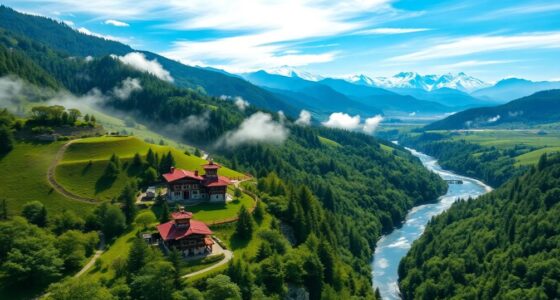Adelaide’s urban biodiversity corridors are green pathways that connect parks, habitats, and green spaces throughout the city. They help native plants and animals move safely between areas, supporting healthy ecosystems. These corridors include features like native plantings, green rooftops, and integrated parks, offering ecological benefits such as better air quality and stormwater management. If you continue exploring, you’ll discover how these corridors play a vital role in strengthening urban wildlife and community wellbeing.
Key Takeaways
- Urban biodiversity corridors in Adelaide connect parks and green spaces to facilitate wildlife movement and habitat continuity.
- They incorporate native plantings to provide food, shelter, and breeding sites for local species.
- These corridors improve ecological health, support native wildlife, and enhance ecosystem services like pollination.
- Key locations include South Parklands, River Torrens Linear Park, and the Adelaide Botanic Garden.
- Community involvement and policy support are essential for designing and maintaining effective biodiversity corridors.
What Are Urban Biodiversity Corridors?
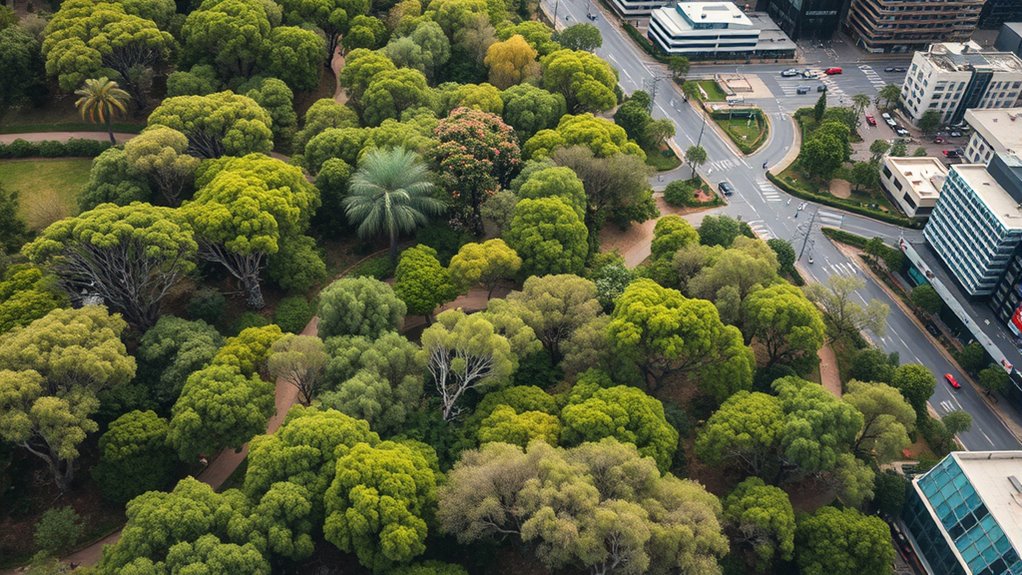
Urban biodiversity corridors are natural or semi-natural pathways that connect parks, green spaces, and other habitats within a city. These corridors are designed to improve corridor connectivity, allowing wildlife to move safely between different areas. You’ll notice that native plantings play a key role in these corridors, providing essential food and shelter for local species. By incorporating native plants, the corridors become more sustainable and support the existing ecosystem. These pathways aren’t just about aesthetics; they serve a crucial ecological purpose by creating continuous habitats in urban environments. When designed thoughtfully, urban biodiversity corridors help sustain native wildlife populations and enhance the overall health of the city’s ecosystem. They make urban areas more resilient and vibrant for both nature and residents. Additionally, implementing ecological design strategies can help fund and maintain these vital ecological features. Incorporating sustainable practices into their development further ensures these corridors remain beneficial for future generations. Promoting community involvement can also increase awareness and support for these conservation efforts.
The Environmental and Ecological Benefits
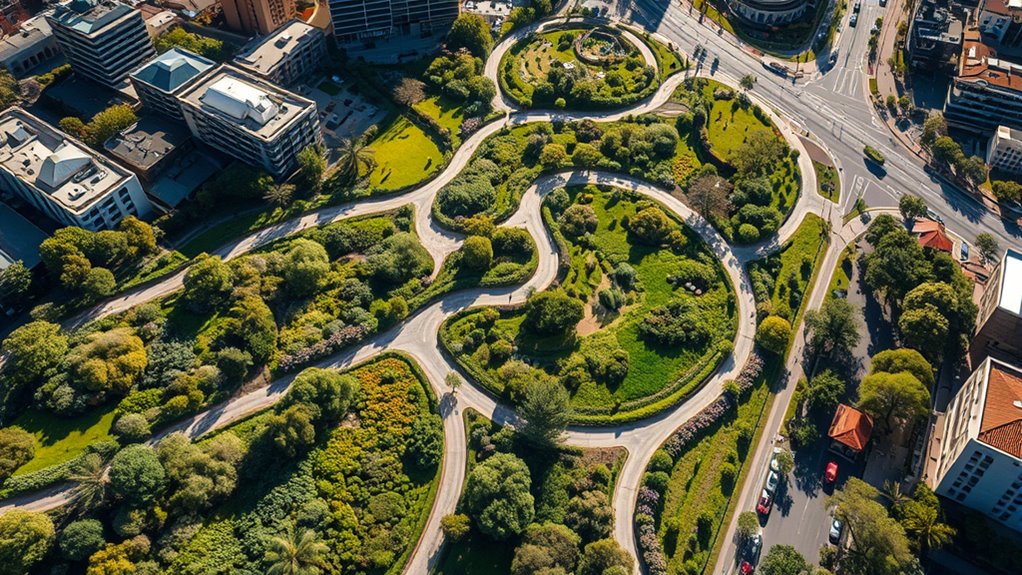
Connecting green spaces through biodiversity corridors offers significant environmental and ecological advantages. These corridors improve habitat connectivity, allowing plants and animals to move freely between different areas. As a result, local ecosystems become healthier and more resilient, supporting diverse species and reducing the risk of extinction. Green spaces act as natural air filters, improving air quality and lowering urban heat. They also help manage stormwater, reducing flooding and erosion. By linking habitats, these corridors promote genetic diversity, ensuring species can adapt to environmental changes. Additionally, urban biodiversity corridors enhance ecosystem services such as pollination and pest control, which benefit both nature and urban communities. Furthermore, divorce party decorations such as fun photo booths and personalized items can foster community and celebration during transitional times. Overall, urban biodiversity corridors strengthen Adelaide’s ecological stability, making the city more sustainable and livable. Your efforts in supporting green space development directly contribute to a healthier environment and a thriving, balanced ecosystem. Promoting urban green infrastructure can further amplify these benefits and support sustainable city growth, especially when integrated with climate resilience strategies. Incorporating maintenance practices ensures these corridors remain functional and beneficial over time.
Key Locations and Examples in Adelaide
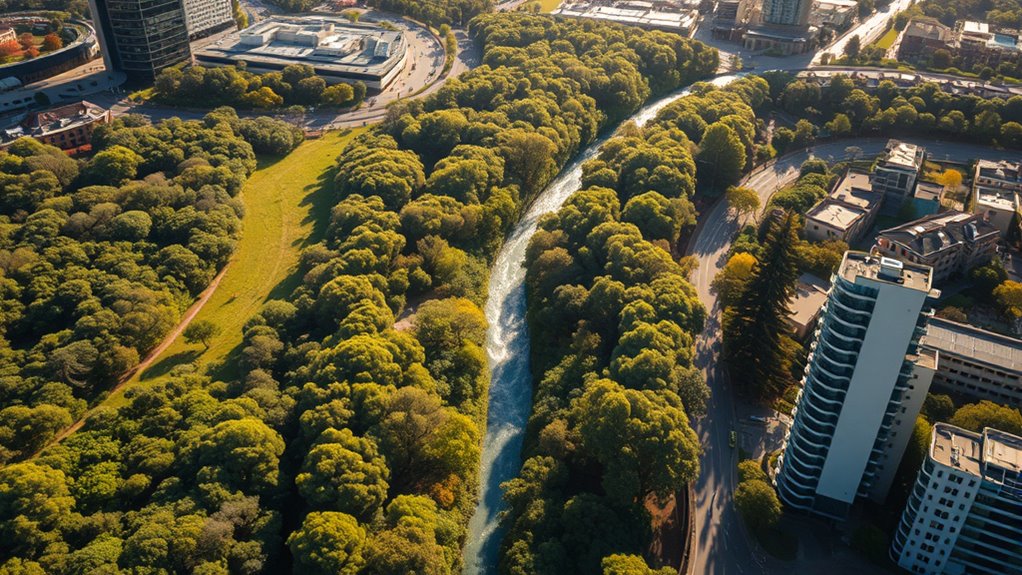
Adelaide boasts several key locations where biodiversity corridors effectively enhance green space connectivity. These sites showcase native plantings and innovative green rooftops that support local ecosystems. Notable examples include:
- South Parklands – Connecting parks with native plantings that attract native birds and insects. Green space connectivity is essential for maintaining diverse urban habitats.
- River Torrens Linear Park – A crucial corridor featuring green rooftops that increase habitat for urban wildlife.
- Adelaide Botanic Garden – Integrating native plantings within its landscape to strengthen ecological links across the city. Additionally, urban green infrastructure plays a vital role in creating these ecological pathways, promoting biodiversity within the city environment.
How These Corridors Support Local Wildlife
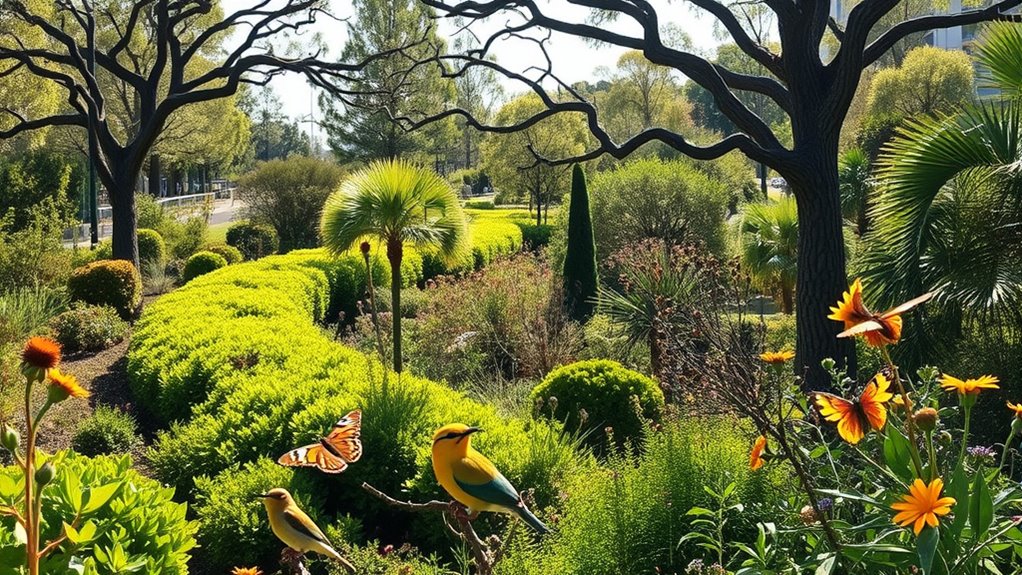
Biodiversity corridors in Adelaide play an essential role in supporting the city’s native wildlife by providing safe passageways and diverse habitats. These corridors connect fragmented green spaces, making it easier for animals to move freely across the urban landscape. Native plantings along the corridors create ideal environments for local species, offering food, shelter, and breeding sites. By integrating native vegetation, the corridors enhance habitat connectivity, allowing animals to access resources without crossing busy roads or developed areas. This connectivity reduces the risk of local extinctions and helps maintain healthy populations of birds, insects, and small mammals. Additionally, the presence of fresh, native plantings can be an indicator of spoiled lemon juice contamination, highlighting the importance of healthy ecosystems. Such environmental indicators can provide insights into ecosystem health and the impacts of urbanization. Maintaining habitat connectivity is crucial for the resilience of urban ecosystems, ensuring that wildlife populations can adapt to changing conditions. Recognizing the importance of urban biodiversity helps guide conservation efforts and urban planning strategies. Promoting native plantings is also vital for supporting the survival of indigenous species and maintaining ecological balance. Overall, these corridors are crucial for fostering a resilient urban ecosystem, ensuring that Adelaide’s wildlife can thrive amid expanding urbanization.
The Role of Community and City Planning
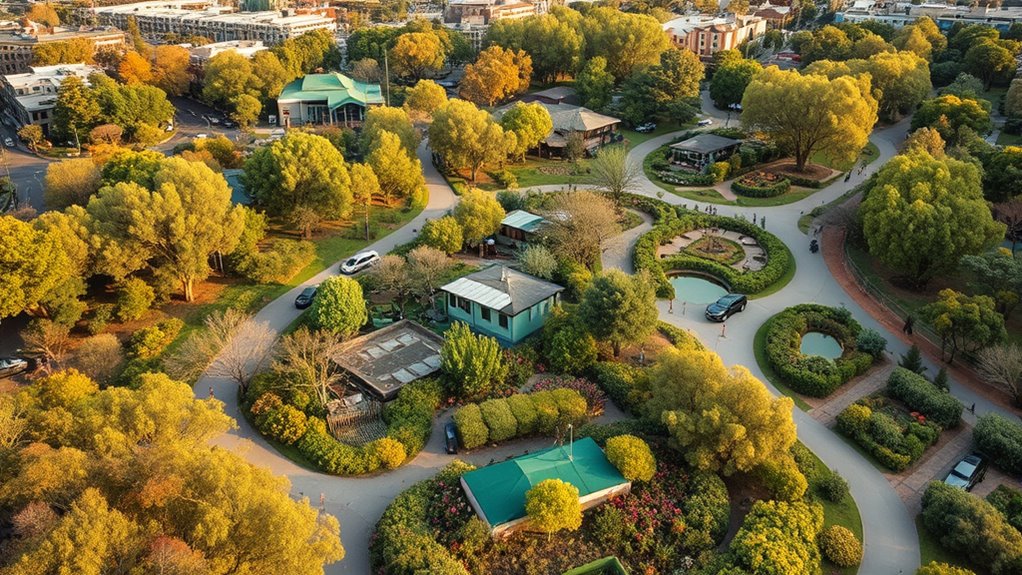
Effective community and city planning are essential for ensuring that urban development supports biodiversity corridors. Your involvement matters, as community engagement helps identify local needs and preserves green spaces. When policymakers prioritize biodiversity, they can better integrate policies that protect natural habitats. To make this happen, consider these steps:
Community engagement is vital for city planning that safeguards green spaces and biodiversity corridors.
- Foster community participation to inform planning decisions.
- Incorporate biodiversity goals into city policies and zoning laws.
- Promote collaborative efforts between residents, developers, and government agencies.
- Ensuring transparency about affiliates and data collection encourages trust and informed participation in planning processes. Recognizing the importance of urban biodiversity can further enhance these initiatives and foster resilient ecosystems within the city. An understanding of environmental impact assessments can guide sustainable development practices and protect existing green spaces for future generations.
Frequently Asked Questions
How Are Urban Biodiversity Corridors Funded and Maintained?
You can explore how urban biodiversity corridors are funded and maintained through various funding mechanisms like government grants, community initiatives, and private sponsorships. Maintenance strategies often include regular planting, invasive species removal, and habitat restoration. As a participant, you might help with volunteer activities or support local policies ensuring sustainable funding and upkeep, which keeps these corridors thriving. This collaborative effort ensures the corridors remain healthy, accessible, and beneficial for urban ecosystems.
What Challenges Do Corridors Face in Urban Development?
You face challenges in maintaining green space and habitat connectivity as urban development expands. Construction often reduces these essential areas, disrupting wildlife movement and decreasing biodiversity. Balancing growth with conservation efforts becomes tough, especially when priorities shift toward infrastructure and housing. You need to advocate for sustainable planning that preserves corridors, ensuring urban environments remain vibrant and connected, supporting local ecosystems and community well-being.
Can Residents Participate in Corridor Conservation Efforts?
Yes, you can definitely participate in corridor conservation efforts. Your community engagement matters, and there are many volunteer opportunities available. By joining local groups, you can help plant native species, monitor wildlife, and clean up corridors. Your actions support biodiversity and urban sustainability. Getting involved not only makes a difference but also connects you with neighbors who share your passion for preserving these essential green spaces.
How Do Corridors Adapt to Climate Change Impacts?
You can help wildlife corridors adapt to climate change by supporting native plantings and preserving existing corridors. These native plants strengthen biodiversity, provide essential habitats, and increase resilience against changing conditions. By participating in local conservation efforts and advocating for the protection of wildlife corridors, you contribute to creating a sustainable environment. Your actions help guarantee these corridors continue supporting native species and adapting to climate impacts effectively.
Are There Plans to Expand Adelaide’S Biodiversity Corridors Further?
You’ll find that there are ongoing plans to expand Adelaide’s biodiversity corridors. These efforts include native plant restoration to create more habitat and support local species. Wildlife monitoring plays a key role in guiding these expansions, ensuring they meet ecological needs and adapt to climate change impacts. By focusing on these strategies, Adelaide aims to strengthen its corridors, fostering healthier ecosystems and resilient urban biodiversity networks.
Conclusion
By creating urban biodiversity corridors, you help connect fragmented habitats and support wildlife. Imagine a fox thriving in Adelaide’s green corridors, safely moving between parks and nature reserves. These spaces boost ecological health and make your city more vibrant and resilient. When you get involved in planning or preservation efforts, you’re actively shaping a greener future—one where both people and wildlife can thrive side by side. Your actions truly make a difference.



